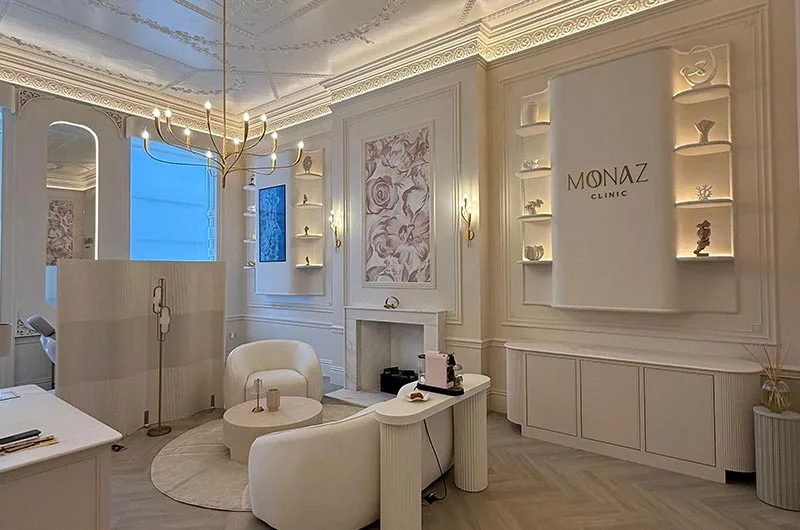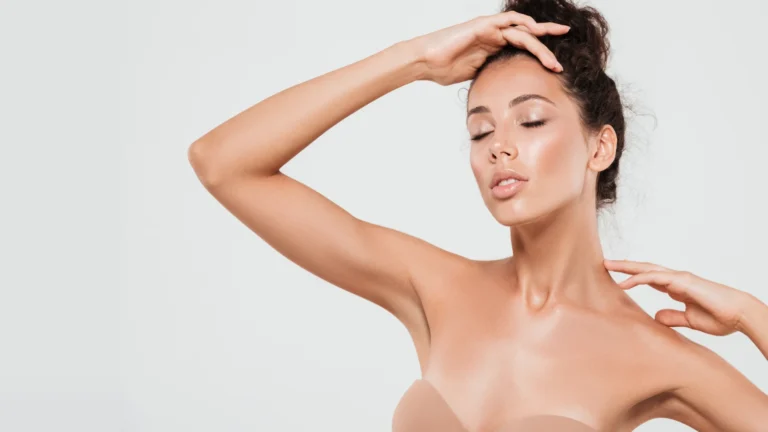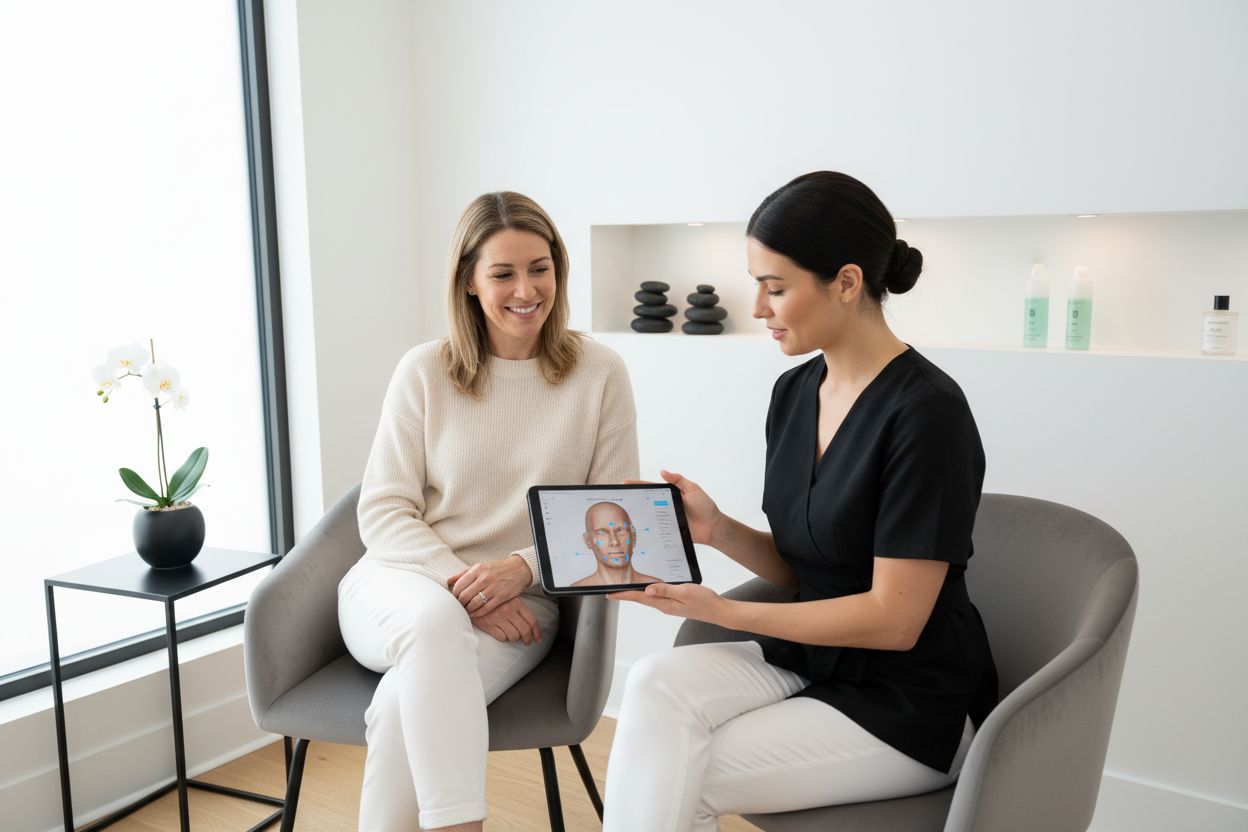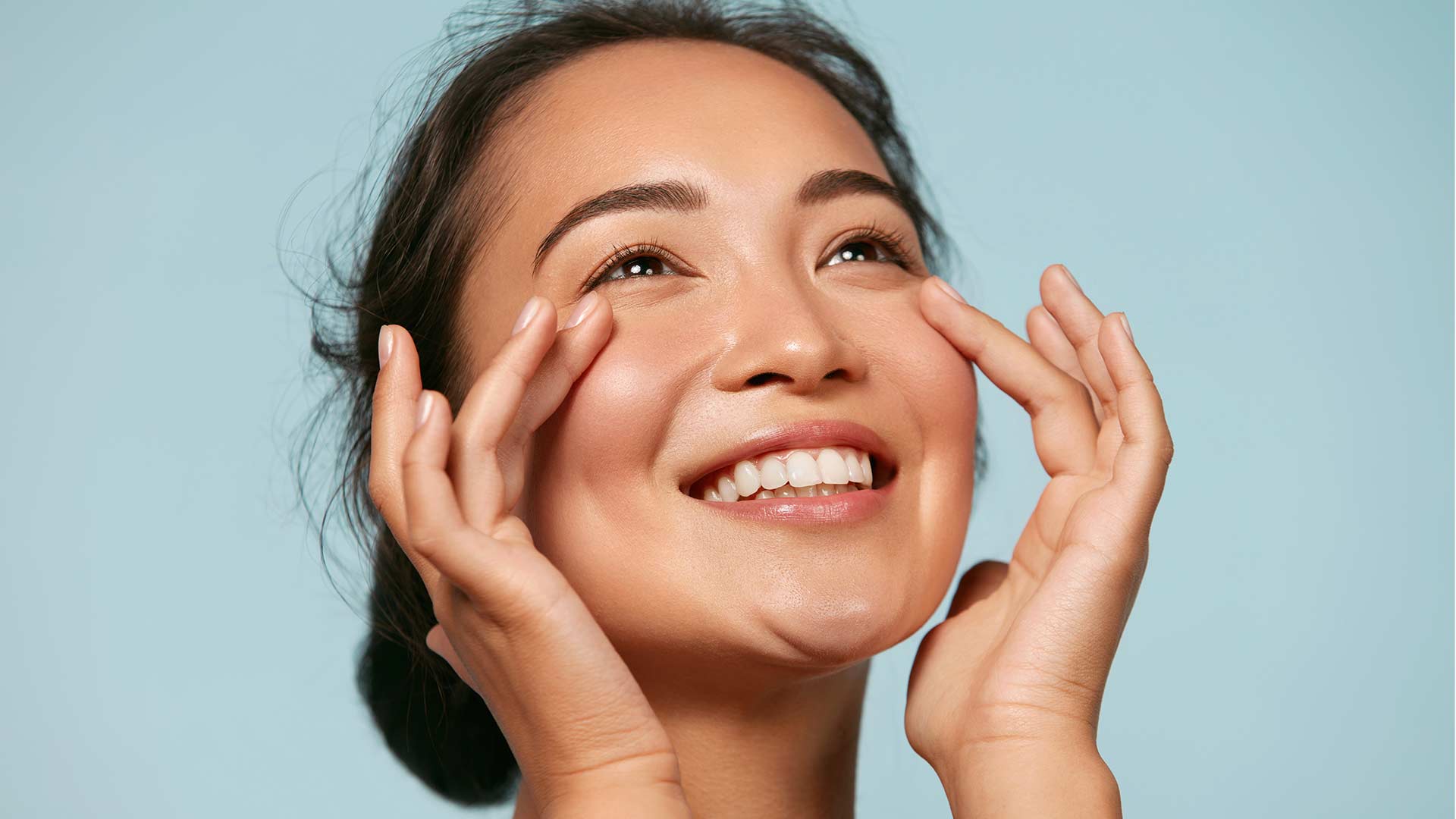Discover 7 essential tips for a natural-looking filler workflow. Enhance your facial aesthetics confidently with our expert guidance.
Dermal fillers have completely changed how people approach facial rejuvenation. The global facial fillers market has surged past £3.8 billion in annual value, and demand keeps rising every year. Yet despite the popularity, most people end up with results that look dramatic or unnatural. Natural-looking filler is actually all about tiny details and careful planning, not just the injection itself.
Table of Contents
- Understand The Basics Of Dermal Fillers
- Choose The Right Type Of Filler For Your Goals
- Consult With A Qualified Practitioner
- Prepare Your Skin Before The Procedure
- Follow Post-Treatment Care For Best Results
- Recognise Potential Side Effects And How To Handle Them
- Schedule Regular Follow-Ups For Optimal Aesthetics
Quick Summary
| Takeaway | Explanation |
|---|---|
| Understand dermal filler basics | Dermal fillers help restore volume and smooth wrinkles. Comprehending their application is essential for natural results. |
| Choose the right filler type | Each filler has unique properties suited for different facial areas. Selecting appropriately is crucial for achieving desired aesthetic effects. |
| Consult a qualified practitioner | A skilled practitioner ensures safety and effective results. They combine medical expertise with an artistic approach for natural enhancements. |
| Prepare your skin before treatment | Healthy skin improves filler absorption and longevity. Pre-treatment care involves hydration, nutrition, and avoiding irritants. |
| Follow post-treatment care guidelines | Proper aftercare minimises complications and optimises results. Adhering to protocols boosts recovery and preserves natural appearance. |
1: Understand the Basics of Dermal Fillers
Dermal fillers represent a sophisticated approach to non-surgical facial rejuvenation, offering women a nuanced method for addressing aesthetic concerns with precision and subtlety. Understanding the fundamentals of facial fillers is crucial for achieving a natural-looking filler workflow.
At its core, dermal fillers are injectable substances designed to restore volume, smooth wrinkles, and enhance facial contours. Primarily composed of hyaluronic acid, a substance naturally occurring in human skin, these treatments provide immediate and progressive improvements in facial aesthetics.
Key components to consider in your natural-looking filler workflow include:
Consultation and facial assessment: Detailed evaluation of individual facial structure
Product selection: Choosing appropriate filler type matching specific aesthetic goals
Injection technique: Precise placement for subtle, harmonious results
According to research from the American Society of Plastic Surgeons, successful treatments depend on understanding facial anatomy, product characteristics, and patient-specific considerations. Practitioners must recognize that no universal approach exists for filler application.
The most effective natural-looking filler workflow demands a nuanced understanding of facial dynamics, tissue interaction, and individual aesthetic aspirations. By prioritizing subtle enhancement over dramatic transformation, aesthetic professionals can deliver results that appear seamless and authentic.
Patients seeking dermal fillers should approach treatments with realistic expectations, understanding that the goal is refined, understated rejuvenation rather than dramatic alteration.
2: Choose the Right Type of Filler for Your Goals
Selecting the appropriate dermal filler is paramount in achieving a natural-looking filler workflow. Understanding the nuanced characteristics of facial fillers enables practitioners to tailor treatments precisely to individual aesthetic requirements.
Dermal fillers are not a one-size-fits-all solution. Each formulation possesses unique properties designed to address specific facial concerns and anatomical regions. The selection process demands meticulous consideration of multiple factors.
Critical considerations when choosing fillers include:
Viscosity and elasticity: Matching filler properties to specific facial areas
Molecular weight: Determining tissue integration and longevity of results
Hydrophilic characteristics: Understanding water retention capabilities
According to research published in the Journal of Cosmetic Dermatology, hyaluronic acid fillers remain the gold standard, offering versatility and predictable outcomes. Sophisticated practitioners recognise that filler selection transcends generic application.
Key factors influencing filler selection include patient age, skin condition, desired aesthetic outcome, and potential tissue response. Lighter, more malleable fillers work optimally for delicate areas like perioral regions, while robust, higher-density formulations provide structural support in cheek and jawline treatments.
Professional assessment involves evaluating skin elasticity, volume loss, and individual facial dynamics. A nuanced approach ensures subtle, harmonious enhancement rather than artificial or exaggerated results. The ultimate goal remains creating a refreshed, natural appearance that respects individual facial architecture.
Precision in filler selection represents the cornerstone of a successful aesthetic intervention, transforming technical expertise into artful rejuvenation.
3: Consult with a Qualified Practitioner
A successful natural-looking filler workflow begins with selecting a medically qualified practitioner who possesses comprehensive aesthetic expertise. Comprehensive aesthetic consultation requires careful consideration of professional credentials and clinical approach.
Qualified practitioners distinguish themselves through advanced medical training, specialised aesthetic certifications, and a profound understanding of facial anatomy. They approach treatments as a nuanced art form, prioritising patient safety and individualised aesthetic outcomes.
Critical elements to evaluate during practitioner selection include:
Professional qualifications: Medical degree, aesthetic specialisation credentials
Clinical experience: Years of dedicated aesthetic practice and patient outcomes
Aesthetic philosophy: Commitment to natural, understated enhancement
According to research published in the Aesthetic Surgery Journal, practitioners trained in precise injection techniques demonstrate significantly superior aesthetic results. Expertise matters profoundly in achieving subtle, harmonious facial rejuvenation.
A thorough initial consultation should involve comprehensive facial assessment, detailed discussion of aesthetic goals, and transparent exploration of potential treatment outcomes. Experienced practitioners will conduct a holistic evaluation, considering factors such as facial symmetry, skin quality, and individual anatomical characteristics.
Patients should feel empowered to ask detailed questions about the practitioner’s background, specific training in dermal fillers, and approach to creating natural-looking results. Transparent communication represents the foundation of a successful aesthetic intervention.
The ideal practitioner views each treatment as a collaborative process, blending medical precision with artistic sensibility to deliver outcomes that enhance natural beauty without appearing artificial or overdone.
4: Prepare Your Skin Before the Procedure
Preparing your skin represents a critical component of achieving a natural-looking filler workflow. Building a personalised skincare routine ensures optimal treatment outcomes and skin health.
Preoperative skin preparation involves a holistic approach that goes beyond surface-level treatment. Skin health fundamentally influences the absorption, integration, and longevity of dermal fillers.
Key preparatory considerations include:
Hydration: Maintaining optimal skin moisture levels
Nutritional support: Consuming skin-supporting nutrients
Minimising inflammation: Reducing potential skin sensitivity
According to research published in the International Journal of Cosmetic Science, proper skin preparation can significantly enhance treatment efficacy and reduce potential complications.
Practitioners recommend avoiding certain activities and substances in the weeks leading up to the procedure. Alcohol consumption, excessive sun exposure, and blood-thinning medications can compromise skin integrity and increase bruising potential.
Ideal skin preparation involves gentle cleansing, consistent moisturisation, and protection from environmental stressors. Patients should focus on maintaining a balanced skincare regimen that supports skin resilience and promotes natural healing.
A comprehensive approach includes addressing underlying skin conditions, managing stress levels, and ensuring adequate sleep. Skin preparation is not merely cosmetic but a fundamental aspect of treatment success.
By investing time in thoughtful skin preparation, patients can create an optimal biological environment that supports seamless filler integration and promotes natural, refined aesthetic outcomes.
5: Follow Post-Treatment Care for Best Results
Post-treatment care is fundamental in maintaining a natural-looking filler workflow and optimising aesthetic outcomes. Understanding comprehensive skincare recovery ensures patients maximise their treatment investment.
Immediate aftercare represents a critical phase in achieving seamless filler integration and minimising potential complications. Precise post-treatment management can significantly influence the longevity and appearance of aesthetic enhancements.
Critical post-treatment recommendations include:
Avoid intense physical activity: Minimise cardiovascular exercise for 24-48 hours
Limit alcohol and blood thinners: Reduce potential inflammation and bruising risk
Protect treated areas: Minimise direct sun exposure and extreme temperatures
According to research published in the Journal of Cosmetic Dermatology, patients who adhere to strict post-treatment protocols experience superior aesthetic results and reduced recovery time.
Professional practitioners typically recommend gentle skincare routines that prioritise hydration and minimal intervention. Avoiding aggressive treatments or introducing new skincare products immediately after the procedure can prevent potential adverse reactions.
Patients should anticipate mild swelling, potential bruising, and temporary skin sensitivity. These are normal physiological responses indicating the body’s natural healing process. Gentle massage and cold compresses can help manage these temporary side effects.
Hydration plays a crucial role in post-treatment recovery. Increasing water intake supports tissue healing and helps distribute the filler more effectively. Patients are advised to maintain a balanced diet rich in nutrients that promote skin regeneration.
Ultimately, patient compliance and patience determine the success of post-treatment care, transforming a medical procedure into a refined aesthetic enhancement.
6: Recognise Potential Side Effects and How to Handle Them
Understanding potential side effects is crucial in maintaining a natural-looking filler workflow. Comprehensive knowledge of treatment risks empowers patients to make informed decisions and respond appropriately to any unexpected developments.
While dermal fillers are generally safe, patients must remain vigilant about potential complications. Professional awareness and prompt intervention can mitigate most side effect risks effectively.
Common side effects to monitor include:
Temporary swelling: Normal physiological response lasting 24-72 hours
Bruising: Potential discolouration at injection sites
Asymmetry: Minor variations in filler distribution
According to research published in Clinical, Cosmetic and Investigational Dermatology, approximately 10-15% of patients experience mild side effects that resolve spontaneously.
Serious complications, though rare, require immediate medical attention. Warning signs demanding professional consultation include persistent pain, significant asymmetry, skin discolouration, or signs of potential infection.
Patients should maintain open communication with their practitioner, documenting and reporting any unusual symptoms. Hyaluronidase treatments offer a reversible option for managing potential filler-related complications, providing an additional layer of safety.
Individual healing responses vary, influenced by factors such as age, skin condition, and overall health. Patients with compromised immune systems or specific medical conditions may experience more pronounced side effects.
Proactive management involves understanding personal risk factors, following post-treatment guidelines meticulously, and maintaining realistic expectations about the aesthetic intervention. Knowledge and preparedness transform potential challenges into manageable aspects of the aesthetic journey.
7: Schedule Regular Follow-ups for Optimal Aesthetics
Regular follow-up appointments are fundamental in maintaining a natural-looking filler workflow and preserving aesthetic enhancements. Understanding comprehensive aesthetic treatment planning enables patients to optimise their long-term aesthetic outcomes.
Follow-up consultations serve multiple critical purposes beyond initial treatment assessment. Strategic monitoring allows practitioners to evaluate filler integration, track tissue response, and make nuanced adjustments as needed.
Key follow-up considerations include:
Initial assessment: Scheduling review within 2-4 weeks post-treatment
Periodic evaluations: Comprehensive check-ups every 4-6 months
Long-term maintenance: Annual comprehensive aesthetic reviews
According to research published in the Aesthetic Surgery Journal, patients who engage in consistent follow-up protocols experience more stable and predictable aesthetic results.
Professional practitioners recommend tailored follow-up schedules that account for individual factors such as age, skin condition, filler type, and treatment goals. Dynamic aesthetic management requires ongoing collaboration between patient and practitioner.
Follow-up appointments provide opportunities to address subtle changes in facial anatomy, assess filler longevity, and proactively plan future interventions. Patients benefit from professional guidance on maintaining treatment results through complementary skincare routines and lifestyle recommendations.
Technology and advanced assessment techniques enable practitioners to track micro-changes in facial structure, ensuring that aesthetic enhancements remain harmonious and natural over time. Precision and patience are key to achieving sustainable, refined aesthetic outcomes.
Ultimately, regular follow-ups transform aesthetic treatments from isolated interventions into comprehensive, personalised journeys of aesthetic refinement.
Below is a comprehensive table summarising the core steps, considerations, and key points from the article to guide readers in achieving natural-looking results with dermal fillers.
| Step/Topic | Key Actions and Considerations | Essential Benefits for Natural Results |
|---|---|---|
| Understand Dermal Filler Basics | Learn about filler types, facial anatomy, and realistic expectations | Ensures subtle, harmonious enhancements rather than dramatic change |
| Select the Right Filler Type | Match filler properties (viscosity, elasticity, molecular weight) to facial areas and personal goals | Tailored results that suit individual features |
| Choose a Qualified Practitioner | Seek trained professionals with proven experience and a natural aesthetic approach | Increases safety, artistry, and outcome predictability |
| Prepare Your Skin Before Procedure | Maintain hydration, nutrition, and avoid irritants such as alcohol or sun exposure | Improves absorption, integration, and longevity of fillers |
| Follow Proper Post-Treatment Care | Avoid strenuous activity, stay hydrated, and protect treated areas from sun and heat | Reduces side effects and preserves natural appearance |
| Recognise and Manage Side Effects | Watch for swelling, bruising, asymmetry, or complications—and consult professionals if issues persist | Promotes safety and prompt recovery |
| Schedule Regular Practitioner Follow-ups | Arrange check-ins within 2-4 weeks, then periodic reviews (4-6 months and annually) for ongoing adjustments | Supports long-term, refined, and stable aesthetic outcomes |
Achieve Natural-Looking Results with Confidence at Monaz Clinic
Seeking a refined and subtle transformation can feel daunting when you want to avoid overly dramatic changes or artificial outcomes. This article has shown that achieving a natural-looking filler workflow involves more than just product choice. You need expert consultation, careful preparation, and ongoing support. If you found these tips helpful but are unsure where to begin your own journey, you are not alone. Many women struggle to find a clinic that truly listens to their goals and prioritises understated elegance.
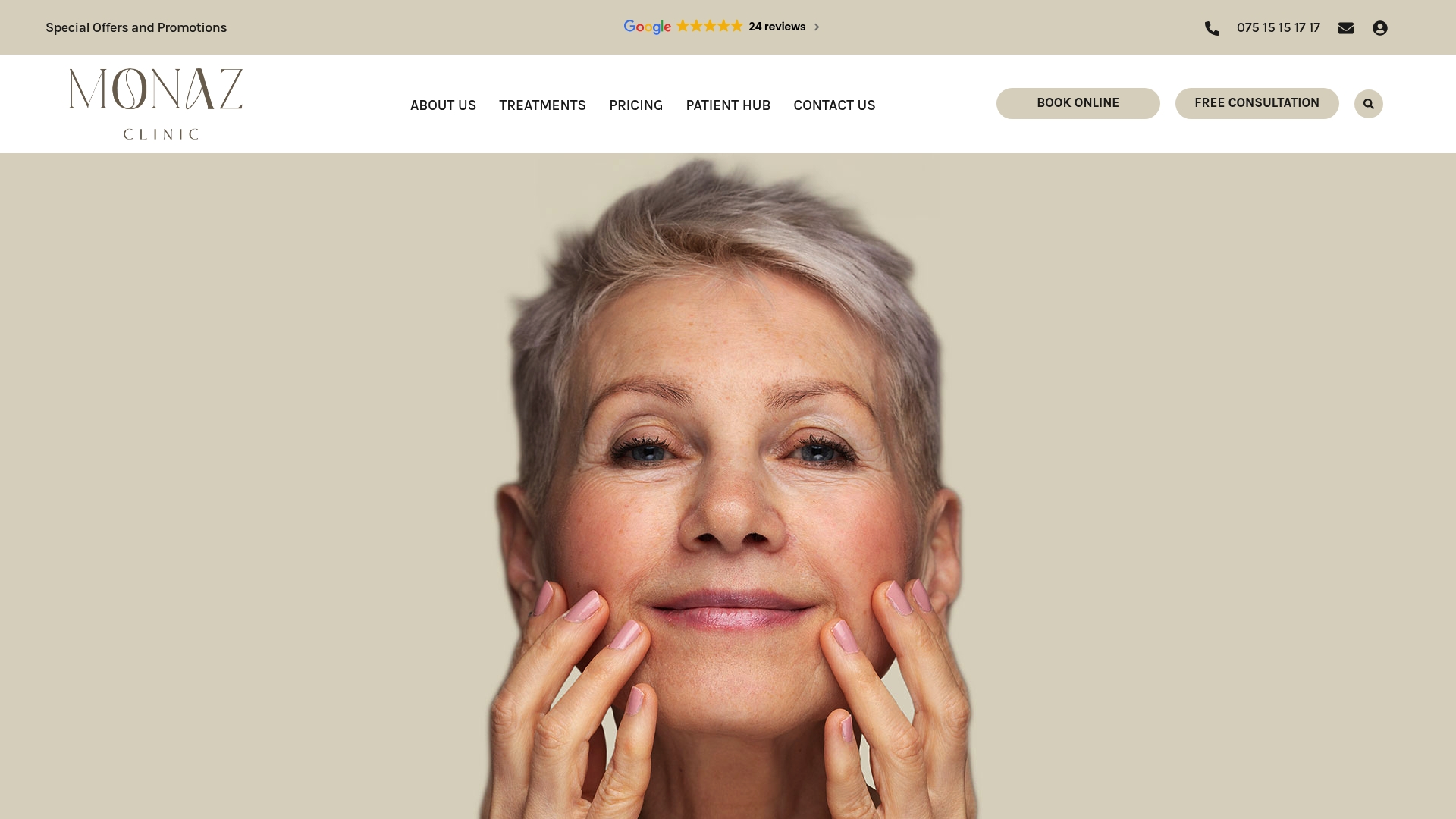
Experience the Monaz Clinic difference. Our Harley Street experts specialise in natural, harmonious enhancements tailored to your unique features. With our proven approach and a complimentary, no-obligation consultation, now is the ideal time to take the first step. Visit Monaz Clinic to learn how our medically qualified team can help you reveal your best self with trusted care and artistry. Embrace the confidence that comes with natural results. Book your personalised visit today.
Frequently Asked Questions
What are dermal fillers and how do they work?
Dermal fillers are injectable substances that restore volume, smooth wrinkles, and enhance facial contours. Primarily composed of hyaluronic acid, they provide both immediate and progressive improvements in facial aesthetics.
How do I choose the right type of dermal filler for my needs?
Choosing the right dermal filler involves considering factors such as viscosity, elasticity, and molecular weight. It’s essential to match the filler properties to specific facial areas and aesthetic goals for optimal results.
What should I expect during the initial consultation for dermal fillers?
During the initial consultation, the practitioner will conduct a comprehensive facial assessment, discuss your aesthetic goals, and explore potential treatment outcomes. This is an opportunity to evaluate the practitioner’s qualifications and approach to ensuring natural-looking results.
What post-treatment care is necessary after receiving dermal fillers?
Post-treatment care includes avoiding intense physical activity for 24-48 hours, limiting alcohol and blood-thinning medications, and protecting treated areas from direct sun exposure. Proper hydration and gentle skincare are also crucial for optimal recovery.
Recommended
- Understanding What Are Facial Fillers and Their Benefits – Monaz Clinic London
- Understanding the Benefits of Dermal Fillers for Facial Aesthetics – Monaz Clinic London
- 7 Inspiring Examples of Facial Contouring Techniques – Monaz Clinic London
- How to Get Rid of Frown Lines Naturally and Effectively – Monaz Clinic London

